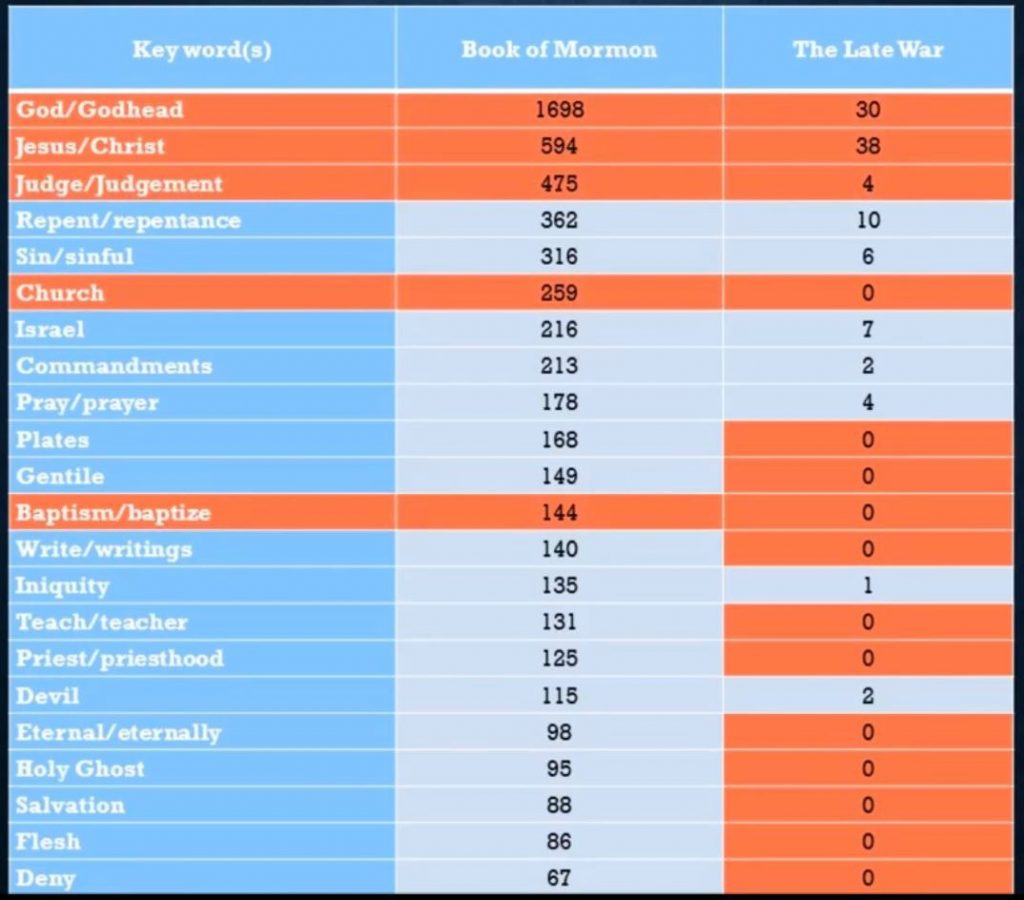Alright guys, so The Book of Mormon is often described as the keystone of The Church of Jesus Christ of Latter-day Saints. A keystone is the stone at the top of an archway that holds everything else in place. If you take out the keystone, everything else crumbles. If critics are successful in proving the Book of Mormon false, our religion comes crashing down. They’ve been at it for almost 200 years now.
In past episodes, we’ve explored some of their conspiracy theories, including the Spaulding-Rigdon Theory and the View of the Hebrews theory. In this episode we’re going to look at yet another one, alleging that Joseph Smith stole the phraseology of The Book of Mormon from The Late War, by Gilbert Hunt. Let’s take a look at what we’re dealing with.
The Late War is essentially a history book about the War of 1812. It’s written in scriptural language and was published in 1816. Essentially the argument against the Book of Mormon goes something like this: The Late War uses words or phrases that also appear in The Book of Mormon. Therefore, it’s logical to assume that Joseph must have read this book (which there is zero evidence of) and used it to construct The Book of Mormon.
It’s a bold claim. And it’s presented very convincingly. We don’t have time to explore every alleged parallel right now, but just to give you a taste of how this theory looks, let’s explore one or two examples.
In The Late War it says, “…sent forth a Proclamation, … abroad … And it came to pass, that a great multitude flocked to the … standard of Columbia… they came in battle array against the…”
And in The Book of Mormon is says, “…sent a proclamation throughout … the land; … And it came to pass that thousands did flock unto his standard [of liberty] … they … went down with their armies … against the …”
They seem pretty similar, huh? Pretty suspicious! But there sure are a lot of ellipses in there. Let’s take a look at what text has been omitted from these examples to see just how similar they actually are:
Obviously, critics are highly manipulative in the way they present these “parallels” that have been cherry-picked and conveniently smashed together. But for some people, I guess it makes total sense that Joseph Smith read The Late War and was like … “sent forth a proclamation, yeah, I like that. Oo! Abroad! Yeah, I’ll take that one, too.” I mean, if words like Nephi and Zarahemla were to show up in The Late War, yeah, you’ve got an argument. But there’s nothing like that. So if this is the best you can do … I mean, believe what you want but … come on.
The most extensive research I’ve found that holds to The Late War theory has this awesome list of “rare phrases” that are found in both books but are not found in the King James Version of the Bible. For example: “And a part thereof.”
The only problem is that equivalent phrases actually definitely do appear in the Bible for this and several other phrases on the list.
But again, The Late War was purposefully written in a biblical style. It uses “And it came to pass” language. We should expect to see similarities in wording and phrasing between all three of these books. And even if Joseph made up the Book of Mormon, doesn’t it make more sense that he would have mimicked biblical style from the Bible rather than some other book? The simple fact remains that the similarities between The Late War and The Book of Mormon are nothing more than superficial and fall extremely short of answering all the questions that need to be answered to explain away The Book of Mormon.
The similarities are so superficial, in fact, that somebody with too much time on their hands and a point to prove actually went through and found over 100 similar “parallels” between the Book of Mormon and Walt Whitman’s Leaves of Grass, including five, six, and seven-word-long phrases the books have in common. Here’s the catch: Walt Whitman’s book was published in 1855, decades after The Book of Mormon. Point being: Finding two books that share similar scattered phraseology proves nothing. And when we look at some of the keywords in the Book of Mormon, we find a huuuge gap between it and the Late War.
Honestly, I wish I had more time to show you how crazy and contrived some of these parallelism claims are, but we’re out of time. Check out the links in the description for more examples. There’s also more info on this topic on our website. Have a great day!
Learning More:

- Read The Late War: https://bit.ly/30t9pUk
